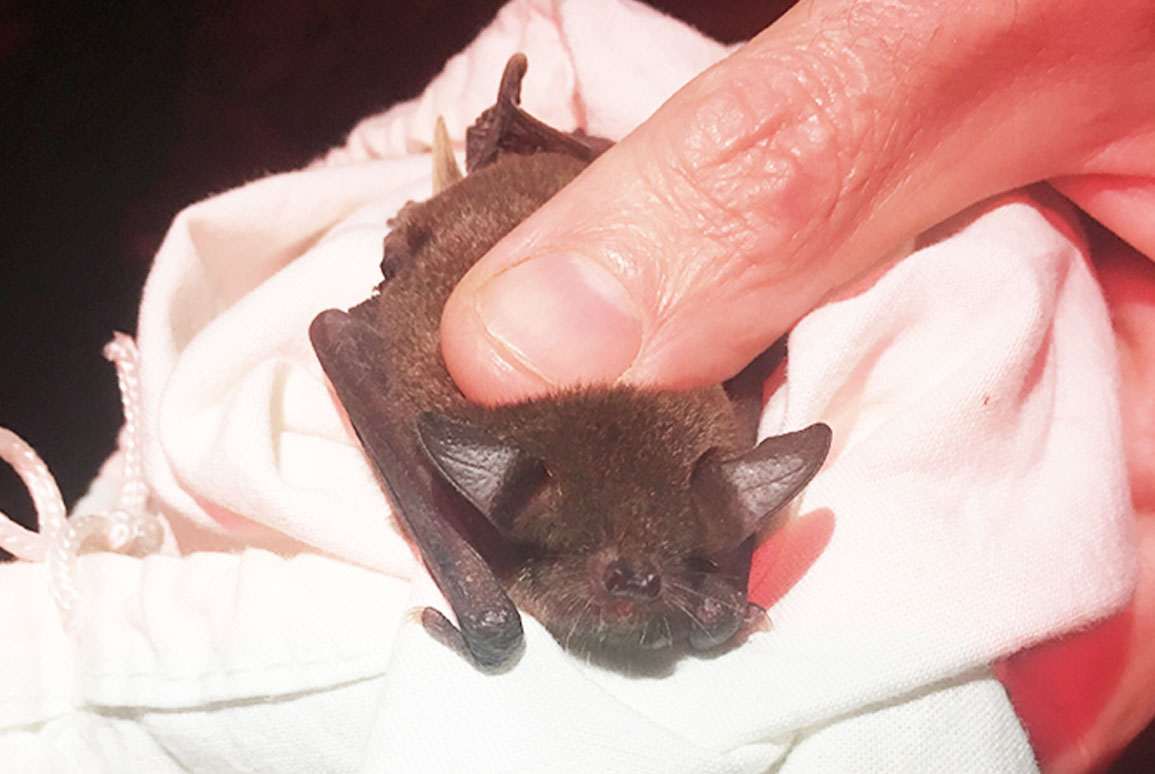Is your project near bat habitat? Here's what you need to know
2 August 2018
New Zealand has two species of native bats, both of which are of conservation concern. The long-tailed bat is classified as ‘Nationally Critical’ and the lesser short-tailed bat has three sub-species, all classified as ‘At Risk’ or ‘Threatened’.

Native bats and their habitats are legally protected under a variety of legislation. They are ‘absolutely protected’ under the Wildlife Act (1953), which is administered by the Department of Conservation (DOC). Their habitats are also protected by the Resource Management Act (1991), which is administered by local government authorities.
Lesser short-tailed bats are adapted to live in the forest interior and now are limited to the few large tracts of mature native forest remaining across New Zealand. Long-tailed bats utilise a comparatively broad range of habitats including: native forest, exotic forest, forest edges, agricultural land, and peri-urban environments. Many of these habitats, such as agricultural and peri-urban environments, are traditionally viewed as marginal habitats for native fauna.
To ensure bats are protected across their habitat range, many land development consents have conditions that require bat surveys and management plans to prevent active roost trees being felled with bats inside. We recommend that bat surveys are undertaken prior to the design phase of a project, so commuting corridors and potential roost habitats can be protected through responsive design (e.g. avoiding key features, habitat buffering, and sensitive lighting design).

Before you begin site development, a suitably experienced ecologist should undertake acoustic bat surveys. Acoustic surveys entail deploying monitors that record and store bat echolocation calls, along with the date and time of occurrence, for later analysis. These surveys are not invasive and therefore do not require a Wildlife Act Authority (WAA) permit from DOC (unless being undertaken on public conservation land). However, DOC has recently set-up a competency database for bat specialists and it is recommended that ecologists undertaking acoustic surveys are signed-off by DOC as competent to do so.
Large infrastructure projects in significant bat habitat may require intensive bat surveys using radio tracking equipment. Radio-tracking is resource intensive but provides the most comprehensive information on how bats are using the landscape. Radio-tracking studies require that bats are captured in order to attach a transmitter; therefore, a WAA must be obtained from DOC. Permit processing for complex projects can take six weeks or more to obtain, and will require an approved bat specialist.

If bats are recorded on a development site and vegetation clearance is required, a bat roost survey should be undertaken by a bat specialist. Both bat species preferentially roost in the oldest, largest trees available. However, long-tailed bats are opportunistic and have been recorded roosting in a variety of habitats including: exotic trees, cabbage trees, tree ferns, rock crevices and artificial structures. Furthermore, long-tailed bats use a large pool of roosts, often moving between roosts on a nightly basis; so confirming the presence of bat roosts prior to vegetation clearance is difficult. Consequently, if bats have been detected on a development site and any of the aforementioned features are present, tree removal protocols should be put in place to monitor potential bat roosts for occupancy immediately prior to their removal.
Various methods can be used to monitor bat roosts including: further acoustic monitoring, emergence watches, and visual inspections by arborists or trained climbers (under the supervision of a bat specialist). If previous surveys indicate that bats may be roosting on the site, or if visual inspections will be undertaken, a WAA must be obtained from DOC as these activities could result in accidentally disturbing or killing wildlife. As noted above, the WAA will include specific conditions prepared by DOC’s Bat Recovery Group and it can take six weeks or more for the permit to be approved.
Boffa Miskell has surveyed and managed bats for a variety of development projects across New Zealand. We have ecologists certified by DOC as competent to carry out acoustic bat surveys and a bat specialist who is also certified to identify bat roosts and handle bats.

